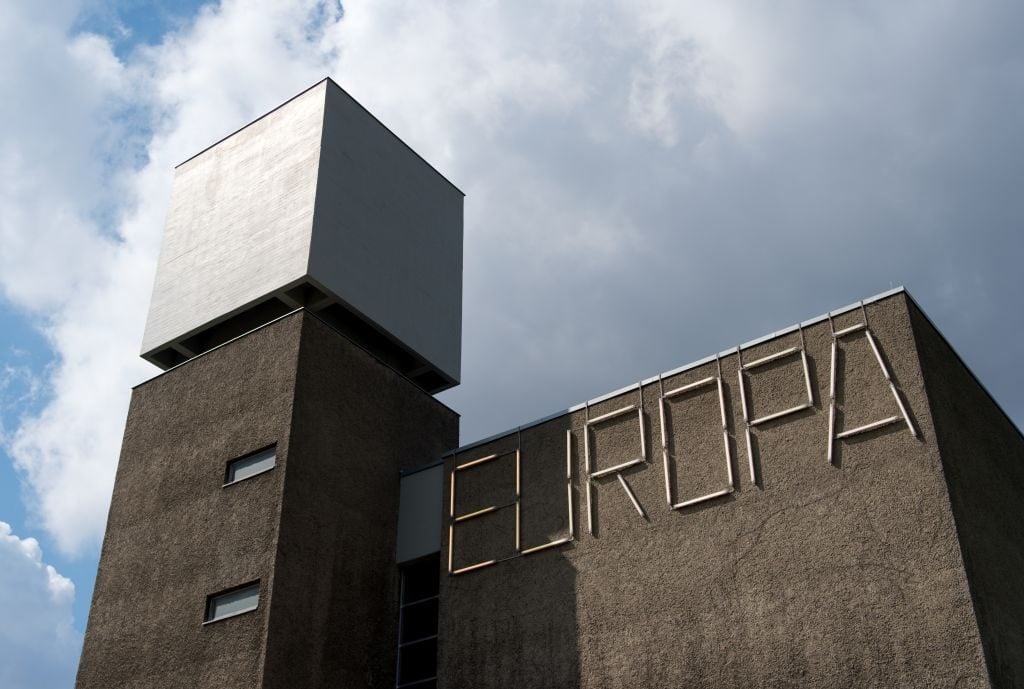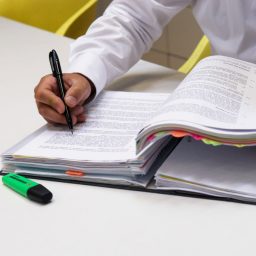French artist Saâdane Afif has penned an open letter to art dealer Johann König criticizing the gallerist for trying to resell two of his works at the dealer’s in-house art fair.
Afif sent the letter, which denounced the dealer for his “betrayal,” last night, copying in a few dozen key dealers and artists in the Berlin art scene. The artist, a longtime transplant to Berlin, expressed his dismay with König’s decision to include his works in the fair, alleging that the gallerist neither sought his permission nor consulted with his longtime art dealer, the veteran Berlin gallerist Mehdi Chouakri.
The two works were to be presented at the Messe in St. Agnes, an in-house art fair that König first piloted in June. Collectors, dealers, and artists are able to consign pieces, sharing a cut with the gallery.
The dust-up illustrates how new models accelerated by the lockdown can ruffle feathers in an art market that is largely governed by discretion and widely established industry norms.
This edition of the Messe, which is currently open to VIPs and will open on Saturday, September 12, to the public, presents 200 well-known and emerging artists’ works, mostly culled from the secondary market on consignment. Notably, the fair is officially part of the Berlin Art Week program; the public can enter for €12 (around $14) by booking a time slot.
Afif writes in the open letter that both he and Chouakri learned of his “participation” in the fair by way of a general newsletter from König Galerie. In his letter, Afif calls the fair a “flea market” that is more “a petty business” than a sincere commitment to artists.
“When I called you to understand your motivations and to tell you that I refused to have my work presented in this way in your gallery, you told me—after having ‘kindly’ offered to buy these works for your own collection—that I no longer have any rights to these works and that you could dispose of them as you wished,” Afif writes to König. “It’s true, I grant you that and I even find it normal, but that’s not the point.”
“[W]e grew up together in the same yard, Berlin,” Afif continues. “A city which, thanks to or because of a certain structural and financial deficit, has seen a rare thing, the development of values of solidarity, support, and exchange within the artistic community.”

Outside view of König Gallery in the St. Agnes Church in Berlin. Photo: Monika Skolimowska/dpa.
After failing to persuade König to remove the works from the sale, Chouakri decided to seek out the collectors who had consigned them in an effort to keep the work out of what Afif calls an “unhealthy” context. Both works were sold by the now-shuttered Zurich gallery RaebervonStenglin.
Chouakri tells Artnet News that he was able to track down one of one of the sellers, who had bought the 2011 sculpture from “The Fairytales Recording.” Although the work was expensive—the price was in the five digits—the dealer made the decision to buy it in order to remove it from the fair. He was not able to determine the seller of the second work, a group of 10 fountains from Afif’s ongoing project, “The Fountain Archives.”
“The last 10 years, Afif’s practice has been deeply related to these pieces,” Chouakri says. “We’re in a free world, and I am happy if Johann does what he wants to do—but not all artists can be put into this classical, secondary-market context.” He notes that the three have been on good terms and known each other over the decades in Berlin. “We all just want to be fair and transparent about what happened here.”
König tells Artnet News that the second work is not on view in the fair, and offers up a slightly different version of events. “I would not use the word ‘participation’ as Afif does, because we are not including particular artists in the way you would do in an exhibition,” König says. He adds that it was the collector who had put the work forward rather than something he sought out.
König says he invited Chouakri, along with other Berlin dealers, to sell works at his fair. Mehdi declined, König says, “which is fine because it was only an offer.” In a text seen by Artnet News, Chouakri expressed concern that dealers who presented works there were not named—only the artist and work details appear on the wall label. “I welcome your initiative, but if you call it a ‘fair,’ then the ‘exhibitors’ should be named, otherwise it looks like a group exhibition,” wrote Chouakri. Another prominent dealer expressed concern that the format would lead collectors away from the galleries who actually represent the artists on view at König’s fair.
König denies that he was asked not to sell the work, and maintains that the whole process followed the unspoken rules dealers usually adhere to when selling on the secondary market.
“How can the art market thrive if you cannot resell artworks?” König asks. “Looking at what Saâdane wrote, I agree. It is hard to sell work right now, and that is why we are giving young galleries, artists, and collectors the option to sell here.”
König explains that the fair does not explicitly distinguish between primary and secondary market work in order to keep things discreet. Photographs are not allowed at the Messe for the same reason.
Still, the issue of how to manage secondary-market sales is a fraught one, which has long pitted dealers against auction houses, often leaving the artists on the margins. While resale royalties do exist in Europe, they run through a complicated bureaucratic system.
In the case of the fair, “it is clear who is selling, considering that it is the seller who is invoicing,” König says. If someone offered him the same deal he is offering consignors, he adds, he would “happily accept.”










